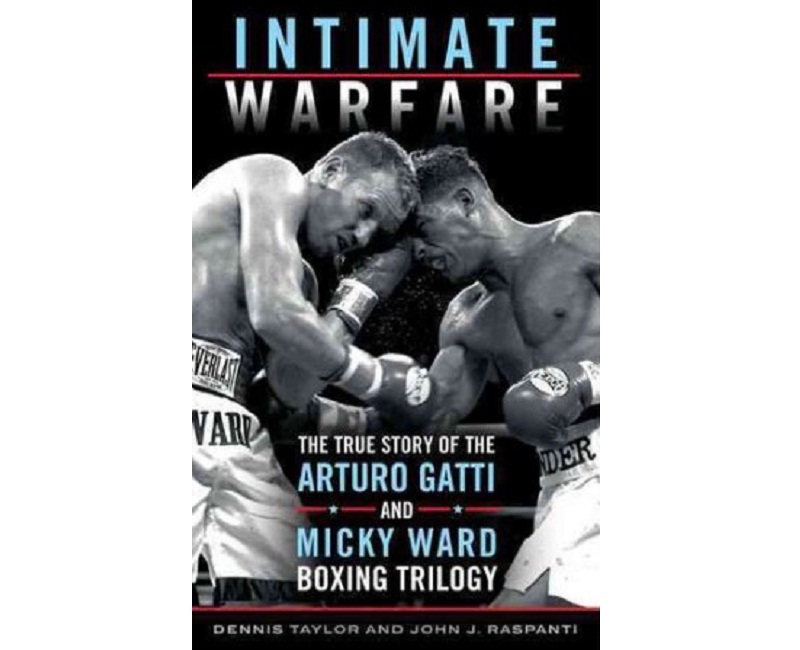Featured Articles
Book Review: Brian Kenny’s “Ahead of the Curve”
Book Review – Boxing fans know Brian Kenny from his work on ESPN2 Friday Night Fights, Showtime Championship Boxing, and PBC Boxing on FOX. But his #1 area of sports expertise is baseball.
Kenny is an MLB Network host and anchors some of its most important studio programming: MLB Now and MLB Tonight. He’s also an ardent proponent of sabermetrics: the use of cutting-edge statistical analysis as a key component of decision-making in virtually every aspect of the game.
Ahead of the Curve: Inside the Baseball Revolution (Simon & Schuster) is Kenny’s presentation in support of sabermetrics. “Somewhere along the line,” he writes, “we stopped thinking. In the most basic ways, a purposeful ignorance set in. We have received considerable baseball wisdom from the early days of childhood from our adult role models, our peers, the media, and the baseball industry itself. What is so fascinating is that all this nonsense survived. For nearly a century, no one even bothered to think about it deeply enough to give themselves an incredible competitive advantage. At a certain point – about the time we discovered penicillin – it was time to evolve past these 19th-century relics. Instead, our thinking calcified and then endured decades beyond its point of usefulness.”
Book Review: Brian Kenny’s “Ahead of the Curve”
With that as his starting point, Kenny challenges long held assumptions regarding baseball strategy.
He begins with the sacrifice bunt, studying how a simple scenario has played out over an 18-year study period.
Man on first base, nobody out. Your team needs a run. Sacrifice bunt, right?
That what most managers do. But look at the numbers.
With a man on first base and nobody out, a team can be expected to score .94 runs in that inning. With a man on second base and one out, a team can be expected to score .72 runs.
“So let’s be clear,” Kenny writes. “Even with a successful bunt, you score fewer runs.”
But by bunting successfully, the manager has taken himself out of the line of fire and absolved himself of blame.
“He put the next two batters in the spotlight,” Kenny continues. “There’s a man on second waiting to be driven in. When he doesn’t score, it’s those two hitters that didn’t get it done. Failure is there visually in the hitter slinking off the field, having left a man on base. The manager walks off scot-free, even though he is the one who traded three chances for two.”
Then there’s the matter of third-base coaches, who are reluctant to send a runner home on a fly ball to the outfield that’s caught for the second out of an inning. The current success rate for attempts to score from third base in sacrifice fly situations is 90%. In other words, the coach only instructs the runner to go for it when the odds are overwhelmingly in his favor.
But if the fly ball is the second out of the inning, the runner’s chance of being driven in by the next or a succeeding batter is roughly 30%. Thus, Kenny writes, “Third base coaches send runners only when it’s obvious they will score. Getting a runner thrown out at the plate looks bad for both the third base coach and runner. But taking more risks will lead to more runs even with more runners being thrown out.”
The manner in which today’s managers deploy their pitching staff also mystifies Kenny. He starts by asking, “Why do all major league teams pitch the way they do?” And he arrives at the answer, “Because that’s the way we always have done it.”
But times change. In 1904, pitchers finished 88% of the games they started. In 2014, that number was down to 2%. “The only reason we still have starters,” Kenny writes, “is because, once upon a time, one pitcher was all you used for the whole day.”
Kenny advocates starting games, not just with long-inning pitchers but with short-inning hurlers as well. And he heaps scorn on the way managers use their closers.
“Today’s relief aces,” he writes, “are treated like rare exotic flowers to be taken out only in certain conditions. They work the ninth inning only, preferably with nobody on base, and they top out at seventy innings for the season. Take a step back. You’ve established one pitcher as the best on your staff, batter for batter. You then artificially restrict his innings [and] keep him from the most important parts of the game.”
But isn’t the ninth inning the most important part of the game?
“Any manager who is saving his closer/relief ace/fireman/stud for the ninth inning,” Kenny notes, “is thinking the following: ‘I’m saving him to seal this win when the game is most on the line.’ And this is simply not the case. The game is frequently on the line in the ninth. But the act of saving your best pitcher for a situation that may not come (a one-run lead in the ninth) is not worth the exchange. A 4-1 lead with the bases loaded in the fifth? Run the numbers! You think there will be a bigger threat? The ninth-inning closer model has bolstered the myth that the game is on the line only in that final inning. It certainly is more obviously on the line at that point. But the fact is, most games are decided before then.”
The nerve center for decision-making during a baseball game is the manager who, Kenny declares, typically stands on the top step of the dugout “like Washington crossing the Delaware.” He then notes that 83% of the MLB managers who started the 2015 season had played previously in the major leagues. By contrast, only 19% of NFL head coaches and 50% of NBA head coaches had similar playing experience. That leads Kenny to ask the rhetorical question: “Do you think Major League Baseball requires some different level of understanding of its sport that the NBA and NFL don’t?”
Then comes more sacrilege. Kenny states, “If you told me I would be an NFL head coach tomorrow – taking over on a Monday in the middle of the season – it would be a disaster. Same thing if you gave me an NBA team. Now tell me I’m managing the Cincinnati Reds tomorrow. You know what? I’d be fine. Understand the distinction. I’m not saying I could coach. I couldn’t teach a cutter or even a good curve ball. I couldn’t teach a hitter proper mechanics. But coaching isn’t managing. The Reds would go along for days before you even knew I was there. It’s not that hard.”
He’s probably right. A case study proves his point.
Game 5 of the 2015 World Series. The Kansas City Royals are leading the New York Mets three games to one. Mets ace Matt Harvey has thrown eight scoreless innings, giving his team a 2-to-0 lead. Mets manager Terry Collins tells Harvey he’s done for the night. Harvey pleads to take the mound for the ninth inning. The crowd is chanting his name. Collins relents and sends Harvey to the mound to finish the game.
“So what’s wrong with a manager letting his stud pitcher take the mound for three more outs?” Kenny asks.
Then he answers.
“Here’s what’s wrong: a mountain of evidence that pointed to Harvey fatiguing late in games. Harvey has a fairly clear fatigue point: 100 pitches. To that point in his career, in pitches 1-100, major league hitters hit an anemic .206 against Harvey. After Harvey reached 100 pitches, they hit a robust .373 with a Hall-of-Fame level .440 on-base percentage. Harvey, after eight innings against Kansas City, was at 102 pitches.”
In the ninth inning, Harvey – predictably, to the sabermetrician’s way of thinking – blew up. The Mets lost the game and, with it, the World Series.
“The mainstream media almost universally defended Collins for going with his heart,” Kenny writes. “Nowhere that I can recall did anyone wonder where brains fit into this equation.”
That leads to Kenny’s next target: the media.
“It is a sportswriter’s job.” he states, “to help bring the game to a mass audience, to help the interested reader or listener understand the latest strategic innovations, explain the nuances, and keep them abreast of the ongoing revolution. During the sabermetric revolution, the sportswriting fraternity failed miserably.”
And there are choice words for the self-important writers who are responsible for inducting players into baseball’s Hall of Fame: “How hard is it to figure out that Bob Feller and Mickey Mantle are Hall of Famers? Most of the players voted into the hall by the writers would also have been voted in by a panel of fourth-grade baseball fans. The hard part for the baseball writers is at the border. This is where they continue to fail.”
Kenny extols Babe Ruth as the greatest hitter of all-time. And he sets forth an intriguing theory (first advanced by Bill James) as to what enabled The Bambino to turn baseball upside down: “It happened only because he was a pitcher. No one much cared if he swung from the heels. His hitting was superfluous. The baseball culture therefore didn’t pressure him into conforming. Ruth had the good fortune to break the single-season home run record while still a pitcher. By the time he was ready to convert to an outfielder, it was too late to stop him. He had already shown that swinging for the fences was a worthwhile risk.”
Basic record-keeping also comes under Kenny’s withering eye. He denounces what he calls ”the tyranny of the batting average,” noting, “In batting average, a single is as good as a home run and walks don’t exist. Yet the very first stat cited in most baseball conversations for 120 years was the batting average.”
He savages what he believes is an idiotic overemphasis on a pitcher’s won-lost record, beginning with the question, “Do you care that Mariano Rivera, from 2001 to 2012, had an average [won-lost] record of 4-3?”
Then Kenny adds, “I’m sorry if I’m the one to break this to you, but the same goes for all pitchers.” And he backs up his opinion with data showing that, between 1920 and 2014 (a 94-year data base), pitchers who threw eight innings in a game and gave up two earned runs were credited with a “win” only 33.6% of the time.
Further analyzing his data, Kenny calls Ted Williams the second best hitter of all-time, behind only Babe Ruth. Examining The Splendid Splinter’s 1941 season (.406 batting average, .553 on-base percentage, and .735 slugging percentage), he writes, “Williams’s numbers can barely be fathomed. Our minds aren’t trained to see .553 as an on-base percentage. It’s too high. No one does that past high school.”
Kenny also notes that, while Joe DiMaggio set a major league record that still stands by hitting safely in 56 consecutive games, Williams owns three of the four longest streaks for getting on base in consecutive games, including a streak of 84 consecutive games in 1949. “In baseball,” Kenny writes, “0-for-0 with three walks is likely better than 1-for-5 with a single.”
Sabermetrics can be a daunting subject for those who grew up in a simpler time when batting average, RBIs, HRs, wins, losses, and ERA reigned. Old eyes tend to glaze over when faced with OPS, OPS+, WAR, DRS, and FIP. But Kenny ties snippets of data together in enlightening and entertaining ways and brings statistics to life with a non-stop parade of informative and entertaining anecdotes
There’s a tip of the hat to Bill James, the patron saint of sabermetrics, who Kenny calls one of “the seven most influential figures in the history of baseball” along with the likes of Babe Ruth, Jackie Robinson, and Marvin Miller. Speaking first and foremost about James, Kenny writes, “The best thing about the sabermetric revolution is that the pioneers of the movement weren’t looking to run teams. They were fans of the game who loved baseball and proved that we can see much more when we take a wider view.”
Kenny also hails Billy Beane (who pioneered sabermetrics with the Oakland Athletics) and Theo Epstein, (who refined the art, first with the Boston Red Sox and now with the Chicago Cubs). The Houston Astros are lauded as today’s team leader in sabermetrics.
And yes; in recent years, teams have been learning. By way of example; the defensive shift (realigning the traditional placement of fielders) began in 1946 with an experiment by Cleveland Indians manager Lou Boudreau when Ted Williams was at bat. It wasn’t until the second decade of the 21st century that the shift became more than an oddity. In 2011, MLB teams employed a defensive shift on 2,358 occasions. In 2014, the number rose to more than 13,000.
“If you give it about thirty seconds of thought,” Kenny observes, “you realize why, for about 130 years, professional baseball players stood where they did on the field. That’s where they always stood. With this inability to evolve, it makes you wonder: how do we even survive as a species?”
“Athletes train hard for hours every day,” Kenny writes in closing. “Managers plot and plan, losing sleep. Organizations pour money into resources. Given how hard every player, coach, manager, and executive works, wouldn’t you think they would leap at the chance to gain a tactical edge using information? Each loss is crippling. Things do not have to even out. You need to fight and scrap and give yourself the best chance to win in every half-inning of every game. Burn this into your mind. You cannot give away a game.”
Thomas Hauser can be reached by email at thauser@rcn.com. His most recent book (Muhammad Ali: a Tribute to the Greatest) was published by Pegasus Books. In 2004, the Boxing Writers Association of America honored Hauser with the Nat Fleischer Award for career excellence in boxing journalism.
-
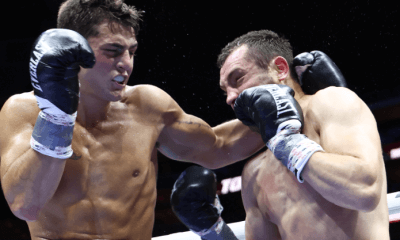
 Featured Articles3 weeks ago
Featured Articles3 weeks agoVito Mielnicki Jr Whitewashes Kamil Gardzielik Before the Home Folks in Newark
-
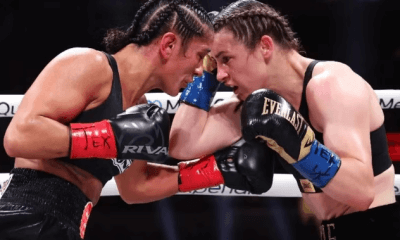
 Featured Articles4 days ago
Featured Articles4 days agoResults and Recaps from New York Where Taylor Edged Serrano Once Again
-
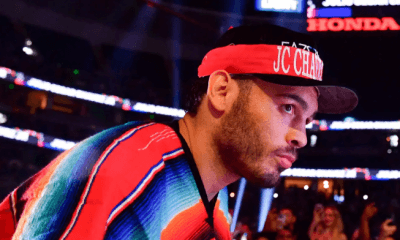
 Featured Articles1 week ago
Featured Articles1 week agoFrom a Sympathetic Figure to a Pariah: The Travails of Julio Cesar Chavez Jr
-
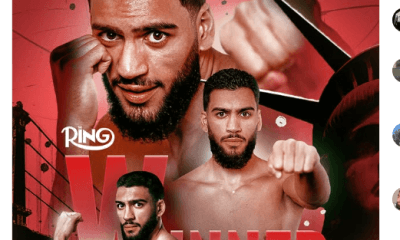
 Featured Articles3 days ago
Featured Articles3 days agoResults and Recaps from NYC where Hamzah Sheeraz was Spectacular
-
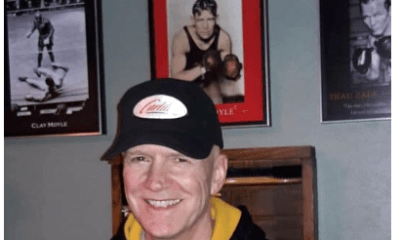
 Featured Articles4 weeks ago
Featured Articles4 weeks agoCatching Up with Clay Moyle Who Talks About His Massive Collection of Boxing Books
-
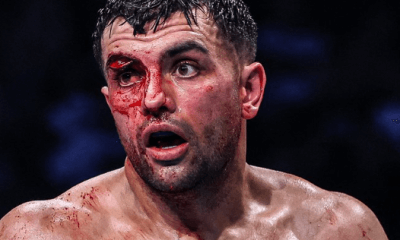
 Featured Articles1 week ago
Featured Articles1 week agoCatterall vs Eubank Ends Prematurely; Catterall Wins a Technical Decision
-
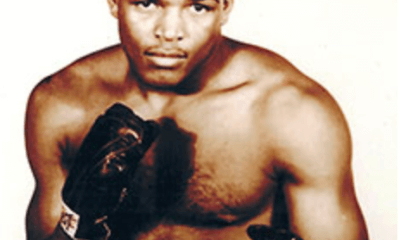
 Featured Articles4 days ago
Featured Articles4 days agoPhiladelphia Welterweight Gil Turner, a Phenom, Now Rests in an Unmarked Grave
-
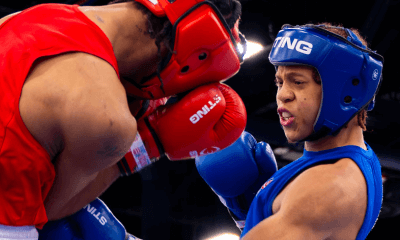
 Featured Articles3 weeks ago
Featured Articles3 weeks agoMore Medals for Hawaii’s Patricio Family at the USA Boxing Summer Festival

